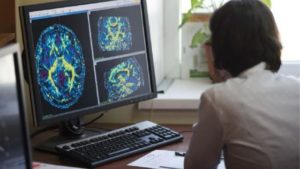Medicine is not just a scientific field but also driven by logic. Creative thinking could open up innovative avenues for diagnostics to help radiologists become top-quality physicians, debated authors in a newly published perspective.
Just like Covid-19, or the novel coronavirus, forced brilliant minds to adapt to this new disease quickly, imaging providers could use new ideas to enhance their respective interpersonal skills, wrote Ahmad, Munir, DO, New York Institute of Technology College of Osteopathic Medicine with Omer A. Awan, MD, associate Vice Chair of Education Department, University of Maryland School of Medicine.
Awan and Munir further added in the Academic Radiology, “As with several other fields of education, the foundation of medicine is scientific, but innovation expands the horizon. Thus, with continued creative thinking development is imperative to the successful medical community advancements.”
Noted below are 5 strategies to get those creative juices to flow:

#1: Work Backwards: Radiologists prefer to work backward when they sense the outcome, or patient illness, to arrive at a solution, which is diagnosis plus cure. It is easy when you struggle when you don’t have straightforward solutions, said the authors. This still ensures the minds of the providers are primed for several diagnoses.
The pair revealed, “When you are open to myriads of possibilities, radiologists can improve upon medical decisions even further to improve overall clinical outcomes.”
#2: Ask Easy Questions: Complex questions are provocative. They lead to complex answers. Radiologists need to understand that precise context of tough studies before any details to ensure they can make appropriate interpretations and decisions, wrote Munir and team.
Diagnostic radiologists could try asking questions like, “why the study was performed?” and “What are you overlooking?” to further explore some alternatives.
#3: Evaluate Evidence Continually: Healthcare guidelines and imaging rules are more and more based on collective evidence. The increased trends of AI would force radiologists to evaluate algorithms constantly and challenge the traditional diagnoses.
Some questions to ponder are: What are those alternative explanations? Do you have hidden data? What are the biases, if any?
#4: Build Associations: Analogies are frequently used for understanding and solving issues in medicine, which includes within the trainee education of radiology. One such example could be the bird’s beak that you see as a sign on the fluoroscopy exams, which helps providers identify people with typical achalasia – a rare disorder of the esophagus.
#5: Seek Innovation: When you introduce the brain to original information continually, it creates a constant learning habit. Unfamiliar topics, according to the authors, elicit the dopamine response that in turn creates new neurons in the brain to encourage motivation.
Munir and Awan said, “Simply put, these new activities, whether it is learning something new like playing the piano, or studying some new topic like AI, can further expand cognitive and intellectual horizons. By priming your brain uniquely through several new domains, it may be possible to inspire creativity indirectly in the medical field.”
sepStream® is one of the finest healthcare imaging solutions with the latest software to assist quick results. If you expect accurate imaging results and prompt action, you must try this solution.